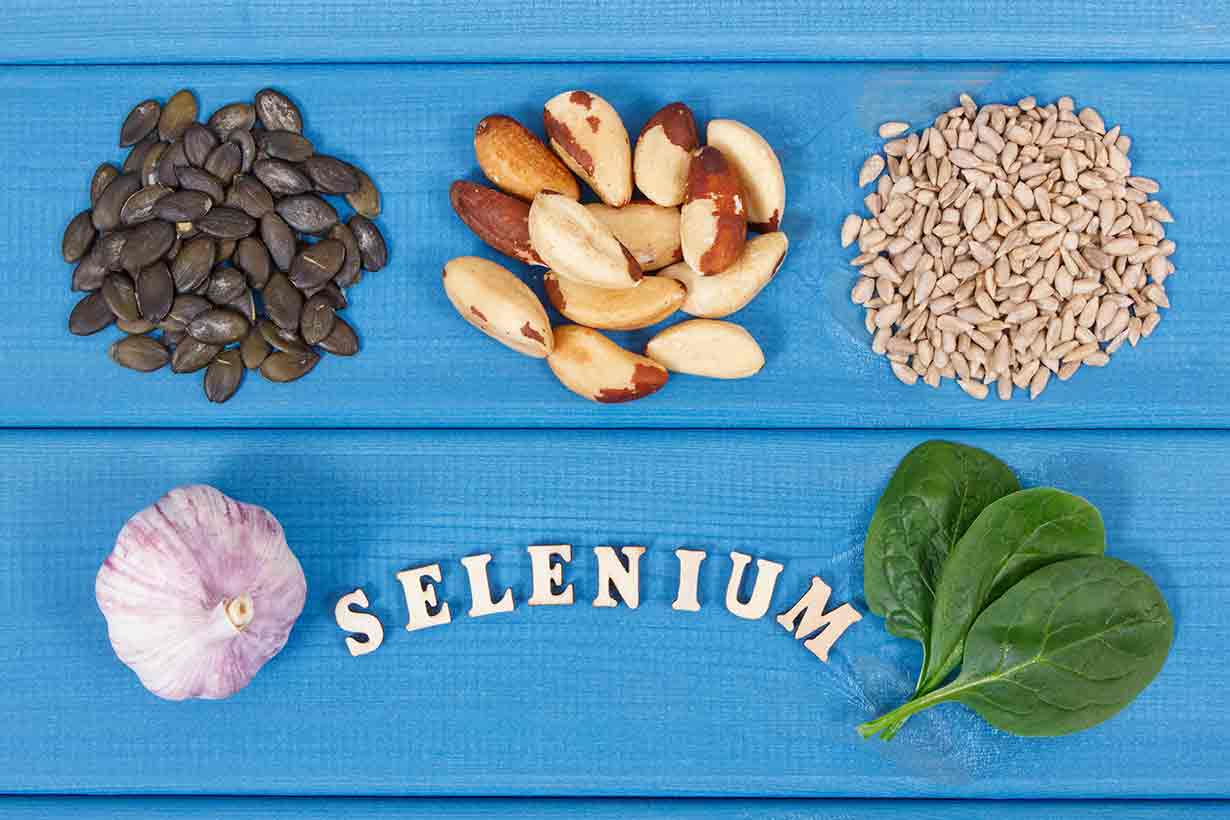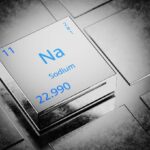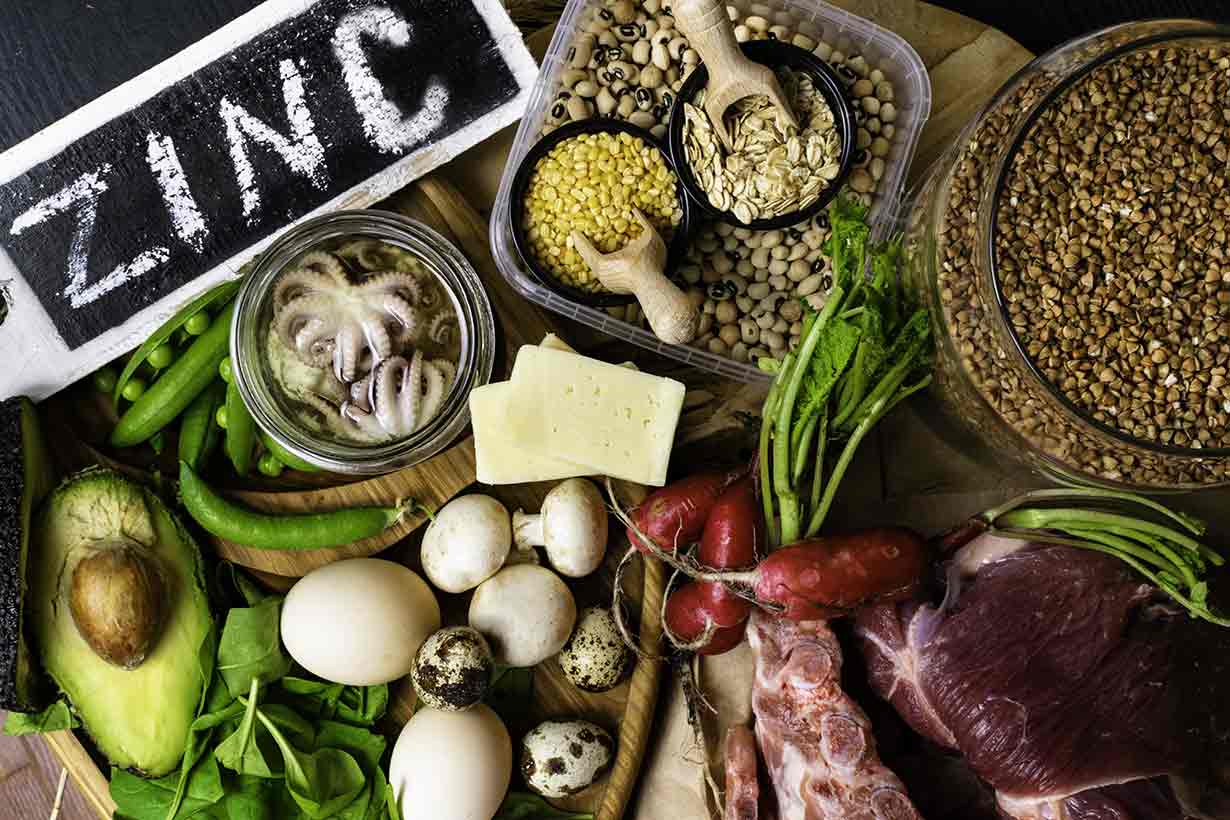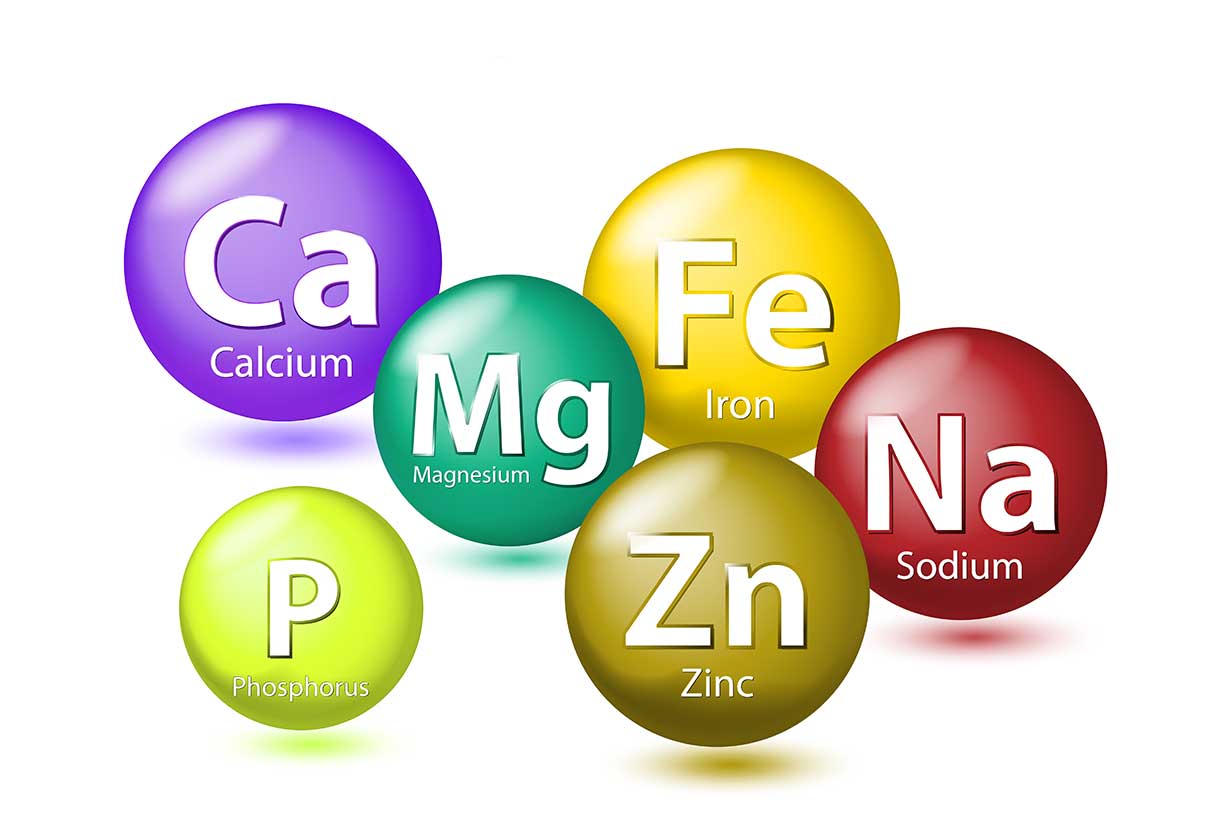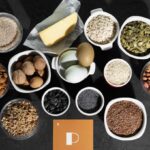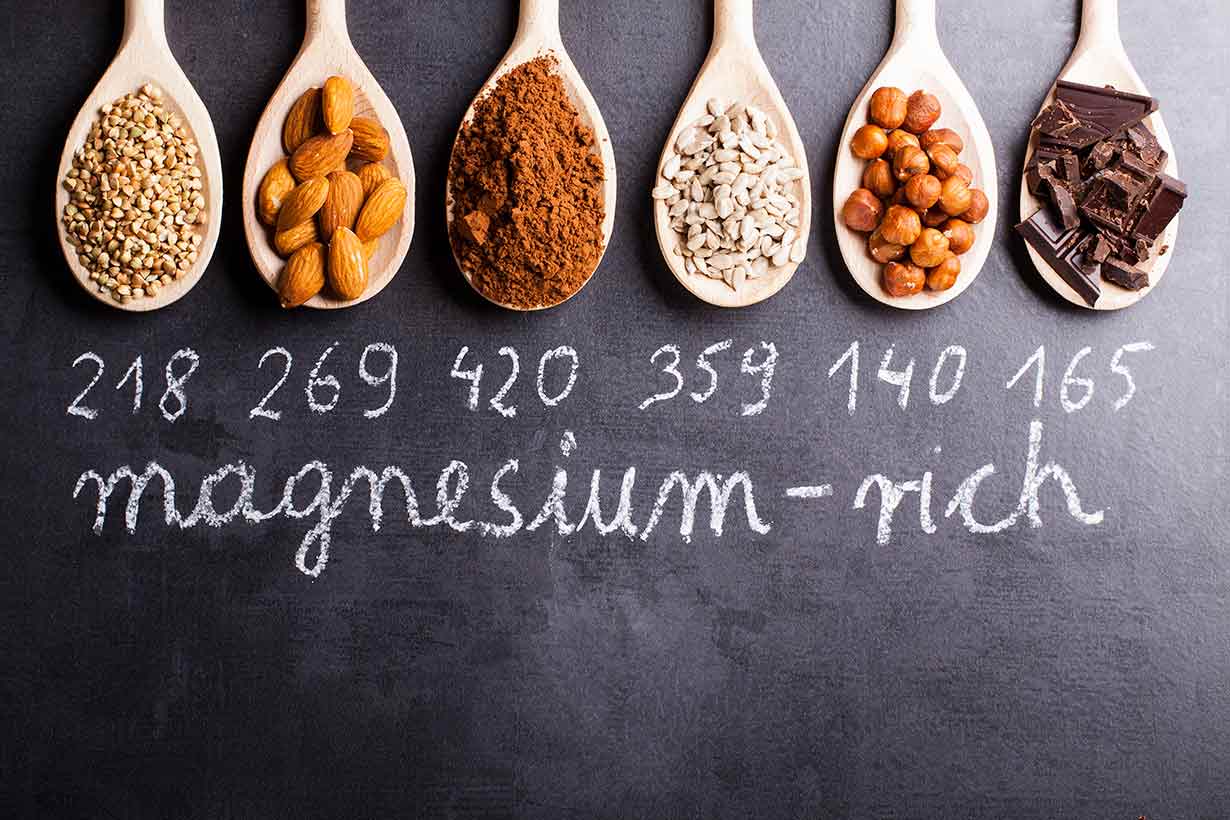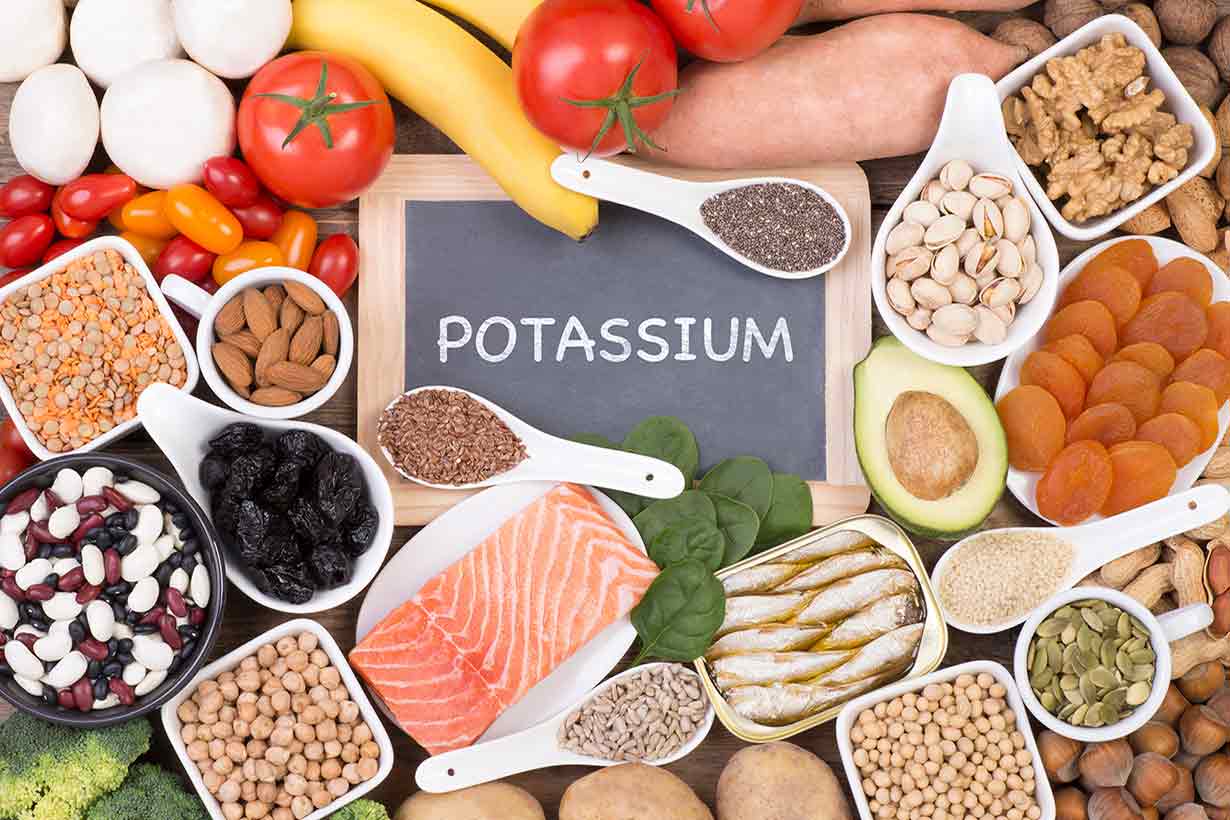30 Foods High In Manganese
Manganese is an essential mineral that plays several crucial roles in the human body.
This article presents a list of foods high in manganese, alongside their manganese content per serving and 100 grams.
What are the best sources?
Table of contents
What Is Manganese?

Before looking at the best sources of the mineral, let’s first look at what manganese is and how much we need.
Manganese is an essential trace mineral present in a broad range of foods.
Although we need to obtain manganese from our diet, we only need to consume it in small amounts to meet requirements.
Manganese has several vital functions within the human body. Firstly, it is a necessary cofactor for many enzymes. Secondly, the mineral plays a vital role in bone health and the immune system, among other functions (1).
The recommended intake of manganese varies depending on age and sex.
How Much Manganese Do We Need?
Adequate Intake Level
The National Academies of Medicine last set adequate intake (AI) levels for manganese in 2021, as shown in the table below (2):Group Male Female Age 0-6 months 0.003 mg 0.003 mg Age 7 – 12 months 0.6 mg 0.6 mg Age 1 – 3 years 1.2 mg 1.2 mg Age 4 – 8 years 1.5 mg 1.5 mg Age 9 – 13 years 1.9 mg 1.6 mg Age 14 – 18 years 2.2 mg 1.6 mg Age 19+ 2.3 mg 1.8 mg Pregnant 2.0 mg Lactating 2.6 mg
Daily Value
A recommended daily value (DV) of 2.3 mg of manganese has also been set by the United States FDA (3).
The daily value is a simple, universal recommended target to aim for based on a 2000-calorie diet.
Foods High In Manganese
Many different foods contain manganese, but grains, legumes, and tea tend to be the best sources.
However, there are foods from most categories that contain a good amount of the mineral.
Here are 30 of the most manganese-rich foods across all food groups.
The source of all nutritional data is the USDA’s FoodData Central nutrition database.
1) Blackberries (raw)
| Manganese per 100 grams | Manganese per cup (144g) serving |
|---|---|
| 0.646 mg (28% DV) | 0.93 mg (40% DV) |
Blackberries offer a surprisingly high source of manganese for fruit. A single cup serving of the berries provides 40% of the daily value (4).
2) Black-eyed Peas (cooked)
| Manganese per 100 grams | Manganese per cup (171g) serving |
|---|---|
| 0.473 mg (21% DV) | 0.809 mg (35% DV) |
Also known as cowpeas, black-eyed peas are among the best legume sources of manganese. A cup serving of boiled black-eyed peas offers 35% of the daily value for the mineral (5).
3) Black Tea (brewed)
| Manganese per 100 grams | Manganese per cup (237g) serving |
|---|---|
| 0.219 mg (10% DV) | 0.519 mg (23% DV) |
Interestingly, one of manganese’s most common dietary sources is black tea.
With nearly a quarter of the daily value per cup serving, black tea drinkers can obtain significant manganese (6).
4) Blueberries (raw)
| Manganese per 100 grams | Manganese per cup (148g) serving |
|---|---|
| 0.336 mg (15% DV) | 0.497 mg (22% DV) |
Blueberries are another of several berries that contain significant amounts of manganese. A 148-gram cup of raw blueberries provides 22% of the mineral’s recommended daily value (7).
5) Brown Rice (cooked)
| Manganese per 100 grams | Manganese per cup (202g) serving |
|---|---|
| 0.974 mg (42% DV) | 1.97 mg (86% DV) |
Brown rice tends to be higher in essential vitamins and minerals than white rice due to rice bran.
Per 202-gram cup serving, cooked brown rice offers 86% of the daily value for manganese (8).
6) Chickpeas (cooked)
| Manganese per 100 grams | Manganese per cup (164g) serving |
|---|---|
| 1.03 mg (42% DV) | 1.69 mg (86% DV) |
Chickpeas are a popular mineral-rich legume used in recipes worldwide and for making condiments such as hummus.
With 86% of the daily value per cooked 164-gram cup, chickpeas are one of the best sources of manganese, too (9).
7) Clams (cooked)
| Manganese per 100 grams | Manganese per 3 oz (85g) serving |
|---|---|
| 1.0 mg (43% DV) | 0.85 mg (37% DV) |
Some types of seafood can contain reasonably high amounts of manganese, particularly bivalve mollusks such as clams.
A 3-ounce (85-gram) serving of cooked clams provides 37% of the daily manganese value (10).
8) Cloves (ground)
| Manganese per 100 grams | Manganese per tsp (2.1g) serving |
|---|---|
| 60.1 mg (2613% DV) | 1.26 mg (55% DV) |
Cloves are a spice made from dried flower buds, and they are incredibly nutrient-rich.
Even in the small amounts in which we use spices such as cloves, they still provide a substantial amount of manganese. Just a teaspoon serving, weighing 2.1 grams, supplies 55% of the daily value (11).
9) Edamame (frozen)
| Manganese per 100 grams | Manganese per cup (118g) serving |
|---|---|
| 1.01 mg (44% DV) | 1.19 mg (52% DV) |
Edamame is fresh, immature soybeans before they dry and harden.
A cup of frozen edamame provides 1.19 mg of manganese, equivalent to 52% of the daily value (12).
10) Hazelnuts
| Manganese per 100 grams | Manganese per oz (28.35g) serving |
|---|---|
| 6.18 mg (44% DV) | 1.75 mg (52% DV) |
Hazelnuts provide a substantial amount of manganese. Just an ounce serving supplies 76% of the daily value of the mineral (13).
11) Lima Beans (cooked)
| Manganese per 100 grams | Manganese per cup (188g) serving |
|---|---|
| 0.516 mg (22% DV) | 0.97 mg (42% DV) |
Lima beans, also commonly known as butter beans, are nutrient-rich legumes.
Per cup serving, cooked lima beans provide 42% of the daily value for manganese (14).
12) Lupin Beans (cooked)
| Manganese per 100 grams | Manganese per cup (166g) serving |
|---|---|
| 0.676 mg (29% DV) | 1.12 mg (49% DV) |
Lupin beans are one of the most protein-rich plant foods, and they contain a wide range of vitamins and minerals.
Among these, they are an excellent source of manganese, with a cup of cooked lupin beans providing equal to 49% of the daily value (15).
13) Macadamia nuts
| Manganese per 100 grams | Manganese per oz (28.35g) serving |
|---|---|
| 4.13 mg (29% DV) | 1.17 mg (51% DV) |
As well as being rich in monounsaturated fatty acids, macadamia nuts provide an excellent source of manganese and copper.
The manganese content of macadamia nuts equals 51% of the daily value per ounce serving (16).
14) Mussels (cooked)
| Manganese per 100 grams | Manganese per 3 oz (85g) serving |
|---|---|
| 6.8 mg (296% DV) | 5.78 mg (251% DV) |
Mussels are another variety of bivalve mollusk shellfish with an extremely high manganese content. They provide 251% of the daily value per three-ounce serving of cooked mussels (17).
15) Oats (raw)
| Manganese per 100 grams | Manganese per cup (81g) serving |
|---|---|
| 3.63 mg (158% DV) | 2.94 mg (128% DV) |
Oats are one of the most popular breakfast foods. They are also a rich source of minerals such as copper, magnesium, manganese, and phosphorus.
A cup of oats provides 128% of the daily value of manganese (18).
16) Oysters (cooked)
| Manganese per 100 grams | Manganese per 3 oz (85g) serving |
|---|---|
| 0.425 mg (18% DV) | 0.361 mg (16% DV) |
Oysters are most famous for their exceptional zinc content.
However, just like clams and mussels, they are also a good source of manganese and other minerals like calcium. A cup serving of cooked East oysters offers 16% of the daily value for the mineral (19).
17) Pecans
| Manganese per 100 grams | Manganese per oz (28.35g) serving |
|---|---|
| 4.5 mg (196% DV) | 1.28 mg (56% DV) |
Pecans are a popular nut variety with good manganese content. An ounce serving (or approximately a handful of pecans) provides 56% of the daily value (20).
18) Pineapple (raw)
| Manganese per 100 grams | Manganese per cup (165g) serving |
|---|---|
| 0.927 mg (40% DV) | 1.53 mg (67% DV) |
Pineapple is well-known for its vitamin C content, but it provides many vitamins and minerals.
Pineapple offers 67% of the daily value for manganese per cup serving (21).
19) Raspberries (raw)
| Manganese per 100 grams | Manganese per cup (123g) serving |
|---|---|
| 0.67 mg (29% DV) | 0.824 mg (36% DV) |
Raspberries are one of the most popular berries, and they are an excellent source of nutrients.
Raspberries supply 36% of the daily value per cup serving (22).
20) Rye Flour (dark)
| Manganese per 100 grams | Manganese per cup (128g) serving |
|---|---|
| 6.06 mg (263% DV) | 7.76 mg (337% DV) |
Produced from the milling of whole rye kernels, rye flour has a higher nutritional value than many popular flours.
A regular cup serving of dark rye flour contains equivalent to 337% of the daily value for manganese (23).
21) Soybeans (cooked)
| Manganese per 100 grams | Manganese per cup (172g) serving |
|---|---|
| 0.824 mg (36% DV) | 1.42 mg (62% DV) |
Soy is the most common plant protein, and it provides good manganese content. A cup serving of boiled soybeans supplies 62% of the daily value (24).
Additionally, foods that use soy as their main ingredient, such as tofu and tempeh, will also be high in manganese.
22) Spelt (cooked)
| Manganese per 100 grams | Manganese per cup (194g) serving |
|---|---|
| 1.09 mg (47% DV) | 2.12 mg (92% DV) |
Spelt is a unique type of wheat sometimes referred to as an ‘ancient grain.’
This grain is a rich source of nutrients, and it provides a good amount of manganese. A typical cup serving of cooked spelt offers 92% of the mineral’s recommended daily value (25).
23) Spinach (cooked)
| Manganese per 100 grams | Manganese per cup (180g) serving |
|---|---|
| 0.935 mg (41% DV) | 1.68 mg (73% DV) |
Spinach is a leafy green that contains a broad range of vitamins and minerals.
This green vegetable is a good source of manganese, too, with a cup of cooked spinach providing 92% of the daily value (26).
24) Sunflower Seeds
| Manganese per 100 grams | Manganese per oz (28g) serving |
|---|---|
| 1.95 mg (85% DV) | 0.55 mg (24% DV) |
As well as being a source of healthy fats, sunflower seeds provide a good mix of protein, vitamins, and minerals.
An ounce serving of sunflower seeds has manganese content equivalent to 24% of the daily value (27).
25) Teff (cooked)
| Manganese per 100 grams | Manganese per cup (252g) serving |
|---|---|
| 2.86 mg (124% DV) | 7.21 mg (313% DV) |
Teff is a tiny grain native to Africa that has become popular over recent years.
This grain is an excellent source of minerals, and it provides 313% of the manganese daily value per cup serving (28).
26) Tripe (cooked)
| Manganese per 100 grams | Manganese per 3 oz (85g) serving |
|---|---|
| 0.103 mg (4% DV) | 0.088 mg (4% DV) |
Tripe is relatively uncommon organ meat made from the stomach lining of animals.
However, it is highly nutritious and provides a broad range of nutrients.
It offers a moderate amount of manganese among the nutrients it contains, with a cup serving equal to 4% of the daily value (29).
27) Wheat Bran
| Manganese per 100 grams | Manganese per cup (58g) serving |
|---|---|
| 11.5 mg (500% DV) | 6.67 mg (290% DV) |
Wheat bran is the fiber and nutrient-rich outer layer that surrounds the starchy center of the wheat kernel.
Wheat bran contains a high amount of numerous minerals, including manganese.
A 58-gram cup serving of wheat bran provides equivalent to 290% of the daily value for manganese (30).
28) Wheat Germ
| Manganese per 100 grams | Manganese per cup (115g) serving |
|---|---|
| 13.3 mg (578% DV) | 15.3 mg (665% DV) |
Wheat germ is a part of the wheat kernel that contains all the necessary nutrients for reproduction.
Notably, it contains even more manganese than wheat bran does.
A cup serving of wheat germ contains 665% of the daily value for manganese (31).
29) Whole Wheat Flour
| Manganese per 100 grams | Manganese per cup (120g) serving |
|---|---|
| 4.07 mg (177% DV) | 4.88 mg (212% DV) |
Wholewheat flour contains all three parts of the wheat kernel; bran, germ, and (starchy) endosperm.
Despite not having quite as much manganese as wheat bran or wheat germ, it is still an excellent source of the mineral.
Per 120-gram cup serving, wholewheat flour provides 212% of the daily value for manganese (32).
30) Whole Wheat Pasta (Cooked)
| Manganese per 100 grams | Manganese per cup (107g) serving |
|---|---|
| 1.32 mg (57% DV) | 1.41 mg (212% DV) |
Since it contains whole wheat, whole wheat pasta is also a good source of manganese.
A 107-gram cup serving of farfalle whole wheat pasta offers 61% of the daily value for manganese (33).
Final Thoughts
Manganese is an essential mineral, and we need to obtain it from our diet, but the mineral is present in a broad range of foods.
For this reason, most well-formulated diets should provide a sufficient intake of manganese.
The easiest way to get manganese is through grains, legumes, nuts, and drinking tea.
However, even some fruits and certain seafood varieties contain reasonable amounts of the mineral.

